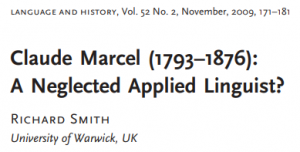PDF #42 – Iranian English Language Learners’ Attitude towards their Accent in English Language An Ecological Approach

Exotic Accents in English- With the spread of English around the world and the recognition of English as a lingua franca (ELF), a large number of studies have investigated the attitudes of learners towards different varieties of English as well as their related accents. However, this attitude towards L1 accented English within the context of Iran has not been explored yet.
Thus, the present study ecologically investigated the attitudes of Iranian English as Foreign Language (EFL) learners towards their L1-accented English based on Bronfenbrenner’s (1993) nested ecosystems model consisting of micro-, meso-, exo-, and macro- systems.
To do this, a triangulation of data collection using an attitudinal questionnaire distributed among 157 respondents (118 female and 39 male) and semi- structured interviews with 60 participants (38 female and 22 male) were collected. The findings indicated a dominant emerging pattern of preference for native-like accent within the ecology of Iran along with the acknowledgement of L1 accented English.
Maintaining linguistic security and self-confidence as well as teachers’ role and materials used within the microsystem of the class, learners’ background experiences within the mesosystem, policies of English language institutes at the ecosystem, and the public view towards accent at the macrosystem contributed to the emerging pattern of preference for native-like accent within the context of Iran.
Foreign Loanwords in English and the “Exotic Charm” of Accents
Some foreign words imported into English have “diacritical marks”, better known as “accents”. Most of these words are from French but there are many also from Spanish, Portuguese, German and other languages. Just how important to the English language are accented characters?
And will they withstand the test of time? asks the author of this article for the “Week”. For example, in English one no longer puts the circumflex accent on rôle or hôtel, and résumé is often written with no accents or one only. But sometimes accents are added even if there is no reason: latté has no accent in Italian, where the word comes, and maté has none in Spanish and Portuguese.

The double-dot crown named “umlaut,” is so fashionable that it is even being added to English words (e.g. the Blue Öyster Cult band) and used in US brands (Söfft shoes). Why? Some claim accents have an “exotic charm”. Benjamin Dreyer, copy chief at Random House, says “Sojourning in a chateau can’t be nearly as much fun as sojourning in a château!”
ccents are actually also very useful when you need to distinguish between rose and rosé, divorce and divorcé, expose and exposé, says the author. The downsides? Accents don’t show up in web addresses and are rarely reproduced in newspapers, say critics. The Chicago Manual of Style, leading guide for book publishers, for its part, “plants its flag squarely in the accent camp”. And, thanks to Unicode, a variety of accents are available, and even smartphone users now have plenty to choose from.
After reading “Exotic Accents in English” you can check important issues for ESL teachers on the section PDFs, and visit my YouTube channel.







